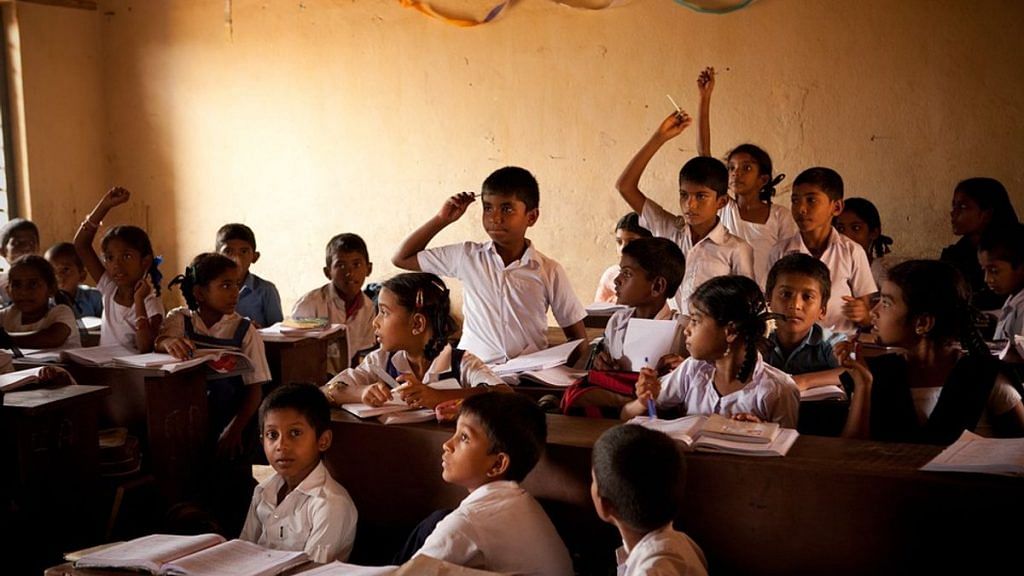New Delhi: The Narendra Modi government retracted the “mandatory-Hindi-lessons” clause from the New Education Policy draft this week after it received criticism from Karnataka, Tamil Nadu and Maharashtra.
At the heart of the furore is a three-language formula dating back to 1968 that southern states have seen as a bid to impose Hindi on local students, an emotive issue for areas that seek to maintain their distinct cultural identities. ThePrint explains what the controversy is all about.
When was the policy first mooted?
The three-language formula was first formulated by the Indira Gandhi-led central government in 1968 in consultation with states and then incorporated into the National Education Policy.
The idea was to encourage students to learn more than one language or just their mother tongue, and to have north Indians learn a southern language and vice versa.
The original formula spelt out that students learn their mother tongue or a regional language, the official language of the Union (English) or the associate official language of the Union (Hindi), and a modern Indian language.
In Hindi-speaking states, the formula translated into learning Hindi, English and a modern Indian language (preferably south Indian). For students in non-Hindi speaking states, it mandated lessons in Hindi, English and the regional language.
But the contours of implementation still lay with states since education is a state subject. As the policy was interpreted and implemented by various states and came to acquire a political colour, it took on different versions in south and north India.
Also read: Modi govt panel wants school fees regulated, Indian languages given prominence
How was it to be implemented?
While states like Uttar Pradesh, Madhya Pradesh and Rajasthan, where the majority speak Hindi, went with Hindi, English and Sanskrit/German/French, others like West Bengal, Assam and Maharashtra, where the regional language is different, included their own tongue along with Hindi and English.
Among other states, Goa offers English, Hindi and an option among Gujarati, Marathi, Konkani and Kannada. Tamil Nadu is the only state that follows a two-language formula, allowing schools to offer Tamil or another regional language if the mother tongue is different, besides English or any other non-Indian language.
In a 2015 paper titled ‘The three language formula: Challenges in its implementation in multi-lingual India’, Leena Ratti of Delhi University’s Central Institute of Education said only a few states had accepted the formula in principle.
“In many of the Hindi-speaking states, Sanskrit became the third language instead of any modern Indian language (preferably south Indian language), whereas the non-Hindi speaking state such as Tamil Nadu operates through a two-language formula,” she wrote.
“Some boards/institutions permit even European/foreign languages like Spanish, French and German in place of Hindi or Sanskrit. Only some states accepted the three-language formula in principle while other made some adjustments and some changed to an extent that it became impossible to implement it,” the paper added.
Tamil Nadu’s objection
Tamil Nadu’s resistance against the “imposition of Hindi” dates back to the pre-Independence era when, in 1937, Dravidar Kazhagam (DK) founder Periyar E.V. Ramasamy opposed then Madras Chief Minister C. Rajagopalachari’s decision to make Hindi compulsory in schools.
The state has always opposed the idea of teaching and learning Hindi in schools, and steadfastly refused to follow the three-language formula.
Former Chief Minister C.N. Annadurai opposed the formula when it was first introduced in 1968, and it has since become a political issue in the state.
What did the New Education Policy draft say?
The first draft of the New Education Policy was prepared by a panel appointed during the first Narendra Modi government. It was released on 31 May for public comment.
The policy triggered an immediate backlash as it also called for non-Hindi speaking states to teach Hindi in schools. Although the draft was subsequently revised, panel members said the policy had never intended to make Hindi a compulsory language.
Panel chief K. Kasturirangan, the eminent nuclear scientist, had told ThePrint earlier that it was mistake in the interpretation of a sentence that led to the confusion.
Also read: Don’t study for your final exam. Let software write it
